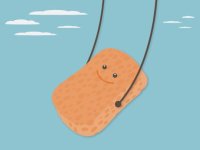Academic Sponge Activities
A sponge activity is a lesson that soaks up precious time that would otherwise be lost. Hint: It should be fun as well as educational.
Your content has been saved!
Go to My Saved Content.To put your rough days into perspective, here’s a teaching story that is equal parts nightmare and exemplar, adapted from Alan Newland’s personal account in .
When he was a first-year teacher in Hackney and Totenham, Newland found his sixth graders to be challenging to the extreme. Before their Thursday swim lesson at a local aquatic center, he repeatedly warned his kids not to jump into the pool before the swim instructor arrived. But before he could undress in the locker room, six students were screaming, giggling, and frolicking in the pool. That’s when Newland lost it.
“Out! Everybody out! Everybody get changed right now! We are not having another swimming lesson until you can all learn how to behave yourselves properly.”
Back on the bus, the students were incensed. Every last one sang at top volume, “We hate you, Newland, oh yes we do! We hate you, Newland, oh yes we do!”
How do you turn something like that around?
Newland went home defeated and angry, on the verge of quitting. The next morning, he described the incident to Olive, an experienced colleague, and she told him what to do—advice that saved him.
“When you go in there this morning, tell the whole class you are going to do two things: First, you are going to apologize to all those children you punished who didn’t deserve to miss their swimming lesson. Secondly, but without threat, just tell them that you’ll do exactly the same thing next week and every week until they all get the message.”
Newland followed Olive’s advice, and the students behaved beautifully the next week and for the rest of the year.
When things go wrong, remember that there is always a next step, and a wise colleague who can help identify it. Julia Thompson, an English teacher, suggests that instructors ask the following questions:
- What is the underlying cause of the problem?
- How can I enlist my students’ support in such a way that they move toward self-discipline?
- Who is being harmed by the problem? How?
Demoralized? Do This!
If a failed lesson leaves you feeling like you’re chasing the wind, wanting to give up, Bonnie Tsui, author of The Right Way to Learn from Your Mistakes, says that how you frame the incident might need recalibration. People, she asserts, fall into one of two possible mindset profiles:
- The Fixed Mindset: Individuals who give up when they’ve made an error (“I’ll never get this!”) and ignore the problem.
- The Growth Mindset: People who view mistakes as a wake-up call to focus on problem solving.
Neural experiments on these mindsets at the Clinical Psychophysiology Lab at Michigan State University found that after committing an error, growth mindset participants exhibited enhanced brain activity and were less likely than the fixed mindset participants to make a similar mistake.
There’s good news for the fixed mindset folks. They can rewire neural pathways to adopt a growth mindset. Here’s the secret: self-compassion. “We found that people who were taught to be kind to themselves felt more motivated to see their mistakes as a chance for growth,” says lead researcher Juliana Breines, a postdoctoral fellow at Brandeis University. “Outside validation didn’t seem to matter as much.”
Whisper forgiving words to the face in the mirror, or when you’re too full of self-loathing to enjoy your microwaved Stouffer’s “meal solution.” Retain your optimism. As Winston Churchill said, “Success is the ability to go from one failure to another with no loss of enthusiasm.”
Increasing Your Odds of Success
Lessen the odds that disruptions will occur. Julia Thompson, author of , claims, “A well-planned lesson is the best discipline plan you can have.” And when students struggle with a concept, �鶹��ý��� blogger Larry Ferlazzo uses two strategies to salvage the class session:
- Academic Press: “One of the elements I’ve been trying to be more intentional at this year is what one of my mentors, Kelly Young, calls having an ‘academic press’—the one key to learning that I want students to get out of each lesson.”
- Modeling: “Explaining what I want students to do is not enough—I have to model it. It doesn’t have to take long, but... there’s no question that modeling minimizes confusion and increases learning.”
Sponges
When failing lessons need to be abandoned, it’s time to implement a sponge. Madeline Hunter originated the term sponge activities to describe “learning activities that soak up precious time that would otherwise be.”
The best sponges are academically rich and provoke laughter. , an education writer for The Huffington Post, says that laughter activates dopamine and the learning centers of the brain. History charades is his go-to activity when his social studies learners need a laugh.
So give your students a dopamine snack when they finish the test earlier than expected or when the Wi-Fi goes out.
Reach for one of our super-absorbent sponges (pdf at left). And check out the dozens of other sponge activities located on �����Ի���.
